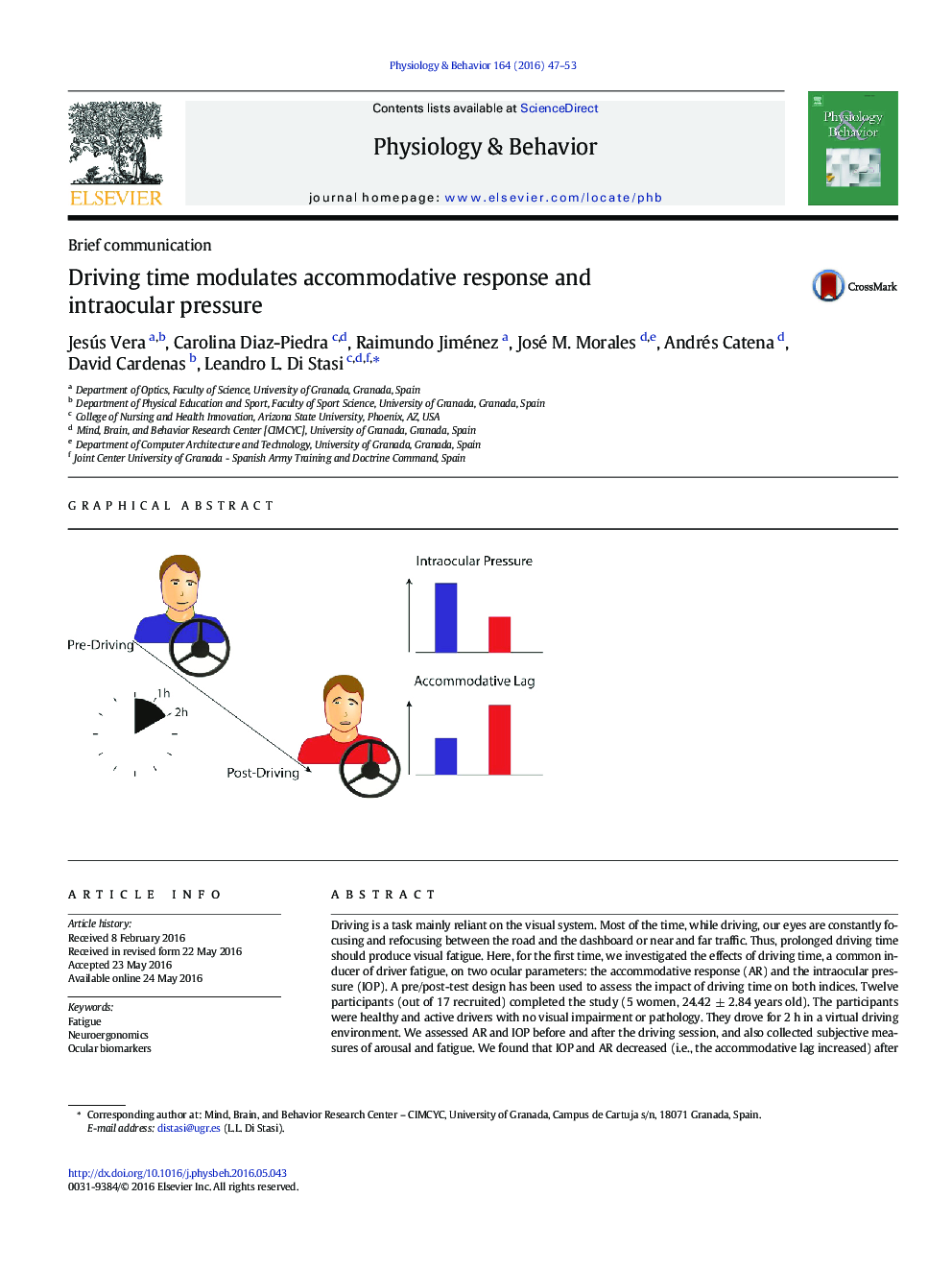| کد مقاله | کد نشریه | سال انتشار | مقاله انگلیسی | نسخه تمام متن |
|---|---|---|---|---|
| 5922672 | 1166279 | 2016 | 7 صفحه PDF | دانلود رایگان |
Driving is a task mainly reliant on the visual system. Most of the time, while driving, our eyes are constantly focusing and refocusing between the road and the dashboard or near and far traffic. Thus, prolonged driving time should produce visual fatigue. Here, for the first time, we investigated the effects of driving time, a common inducer of driver fatigue, on two ocular parameters: the accommodative response (AR) and the intraocular pressure (IOP). A pre/post-test design has been used to assess the impact of driving time on both indices. Twelve participants (out of 17 recruited) completed the study (5 women, 24.42 ± 2.84 years old). The participants were healthy and active drivers with no visual impairment or pathology. They drove for 2 h in a virtual driving environment. We assessed AR and IOP before and after the driving session, and also collected subjective measures of arousal and fatigue. We found that IOP and AR decreased (i.e., the accommodative lag increased) after the driving session (p = 0.03 and p < 0.001, respectively). Moreover, the nearest distances tested (20 cm, 25 cm, and 33 cm) induced the highest decreases in AR (corrected p-values < 0.05). Consistent with these findings, the subjective levels of arousal decreased and levels of fatigue increased after the driving session (all p-values < 0.001). These results represent an innovative step towards an objective, valid, and reliable assessment of fatigue-impaired driving based on visual fatigue signs.
133
Journal: Physiology & Behavior - Volume 164, Part A, 1 October 2016, Pages 47-53
